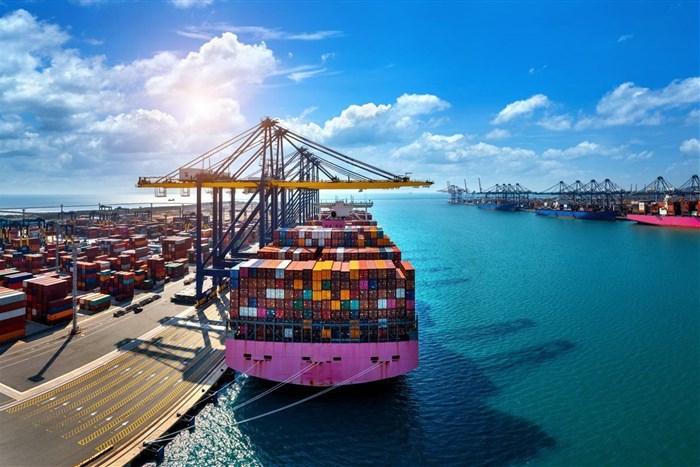






The good news is that this resilient South African agri performance is likely to continue for the foreseeable future. We remain in the La Nina climate phase, which means we can expect the good rains of recent months to continue through our winter season, and probably into the coming peak agriculture season. The summer grain crops outlook is also still very positive, with record sunflower, soya beans, and maize crops.
In fact, the country’s commercial summer grain and oilseed crop reached close to 18 million tonnes with the country’s biggest stable at 14.9 million tonnes. And when you consider the domestic maize consumption typically averages just under 12 million tonnes, reserve levels and the potential for solid exports are both very good.
Of course, successful agri-sector performance is about much more than just good rains and growth-positive weather conditions. There are also a number of other factors that will impact – positively and negatively – on SA’s agri production and exports through the rest of 2022.
Perhaps the most obvious of these is the ongoing Russia-Ukraine war. While it’s difficult to consider that anything positive could come out of this devastating war, the reality is that its consequences for South Africa’s agri sector have actually been something of a mixed bag – and this will probably continue to be the case going forward as the world increasingly expects a very protracted conflict situation in the region.
On the one hand, the produce that was anticipated to flow into Russia and Ukraine was suddenly halted due to the suspension of the former from Swift, which had significant implications for all countries that dealt in agri commodities with the two countries.
South Africa is one of those countries, but not on such a large scale that the disruptions had a massively significant negative impact on our agri-export sector. Of course, there were some exporters that still had an opportunity to export produce into Russia and, for them, the massive spike in demand translated into very solid agri commodity prices.
Going forward, it’s likely that demand for quality, affordable agricultural produce will increase dramatically in both countries as the export bans imposed by many of their key supply regions take hold. While this may present opportunities for South African agri exports, the extent to which exporters in this country capitalise on those opportunities will still depend largely on their ability to overcome the logistics challenges and ensure security of payment from importers in the war-torn regions.
Another significant factor that is shaping the prospects for SA’s agri exports is undoubtedly freight. Overall freight costs have been on a sharp and steady upward trend in recent months, not just on the back of steep fuel price increases, but also driven by general price hikes introduced by the key freight and logistics providers globally.
Add to this the lingering global supply chain bottlenecks and infrastructure insecurity caused by Covid-19, much of which has still largely not been resolved, and freight complexities and costs have the real potential to impact very negatively on agri exports in the months and years ahead.
The other side of this freight challenge coin for South Africa is, of course, that around 41% of the country’s agricultural produce is exported across Africa.
While this doesn’t insulate exporters from the challenges of rising freight and fuel costs, it does create opportunities for the savvy exporter to build a far more robust and resilient export supply chain that is largely protected from the influences of international freight challenges. And as the positive impact of the recent African Continental Free Trade Area (AfCTA) agreement becomes more widely felt, there is the real potential for South African exporters to build highly resilient and very lucrative operations across the continent.
Immediate export prospects, into Africa and globally, remain very solid with an anticipated 160 million tonnes of produce likely to be packed for export in this season. This represents a marked year-on-year increase from the already high of 2.4 million tonnes exported in 2021.
The exchange rate of the rand against most major currencies also remains conducive to good margins, which will hopefully offset any pressures created by the rising global inflationary environment. In terms of citrus, specifically, the recent breakthrough agreement with China around export/import protocols will likely have a very positive long-term impact on South Africa’s citrus export volumes into that country in the coming years.
In the longer term, many of the global events outlined above – and particularly the Russia-Ukraine conflict, could well have the impact of creating a greater focus by all global trade partners on ensuring a more open and fair international trade landscape. The hope is that this might catalyse a shift in global attitudes towards the removal of unfair tariff regimes, some of which still restrict South Africa’s competitiveness in many of its export markets.
A typical example is the recent EU regulation on controlling False Codling Moth (FCM) that requires imports of citrus to undergo mandatory cold treatment and pre-cooling steps for periods of up to 25 days prior to the shipment. This is despite the SA industry having a rigid FCM Risk Management system in place and further providing scientific evidence.
If this shift takes place, it will not only result on more open markets and export-conducive global conditions, but it will also provide further impetus for the application of the innovative digitised agri systems that emerged during the Covid-19 pandemic as restrictions on movement led to the rapid implementation of digital processes for produce inspections and trade transactions.
Such a combination of more open markets and digitally-enabled trade will undoubtedly have very positive implications for South African Agri exports sector and will enable it to continue building on the very strong foundations it has set in place, particularly in recent years.